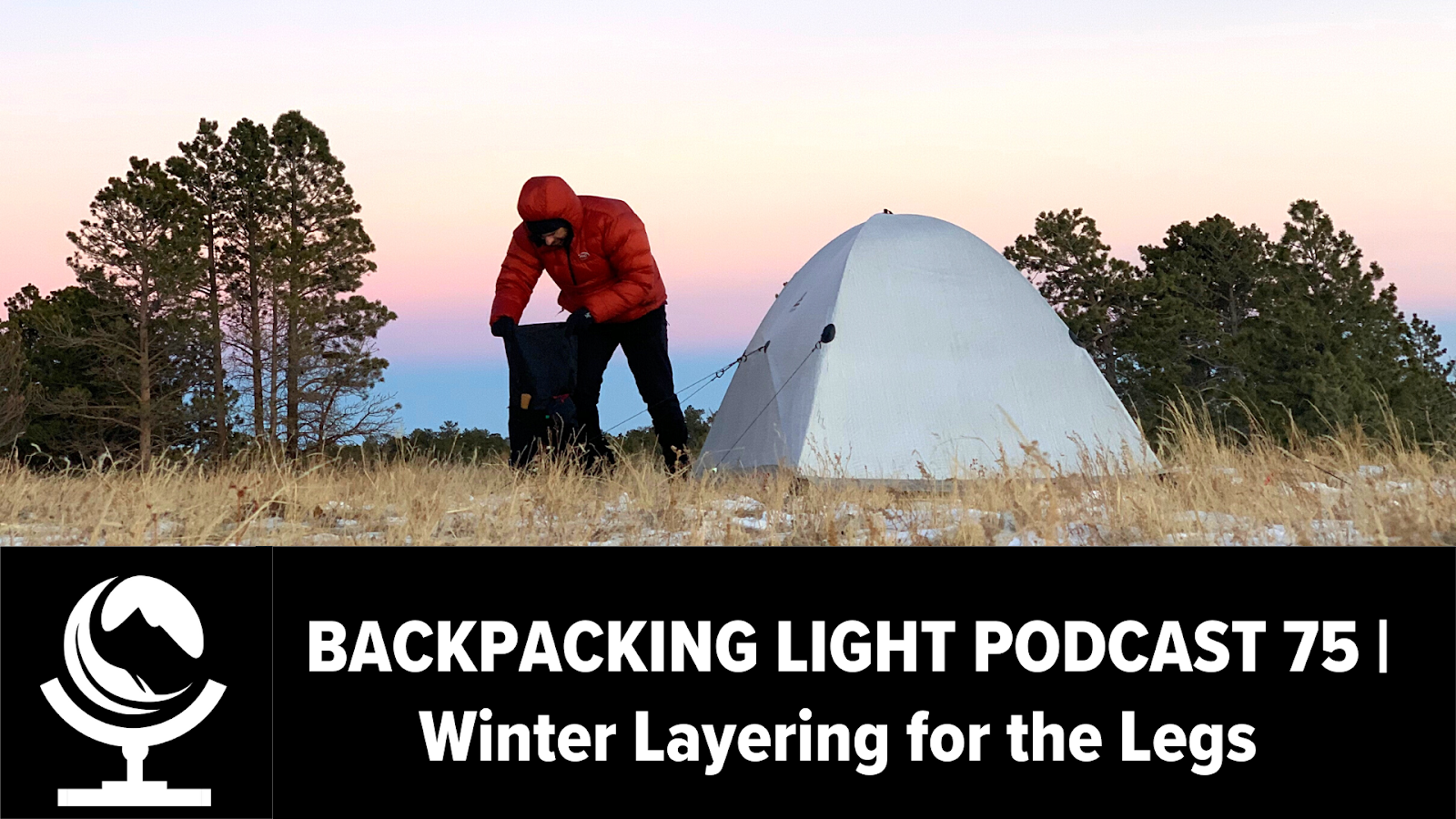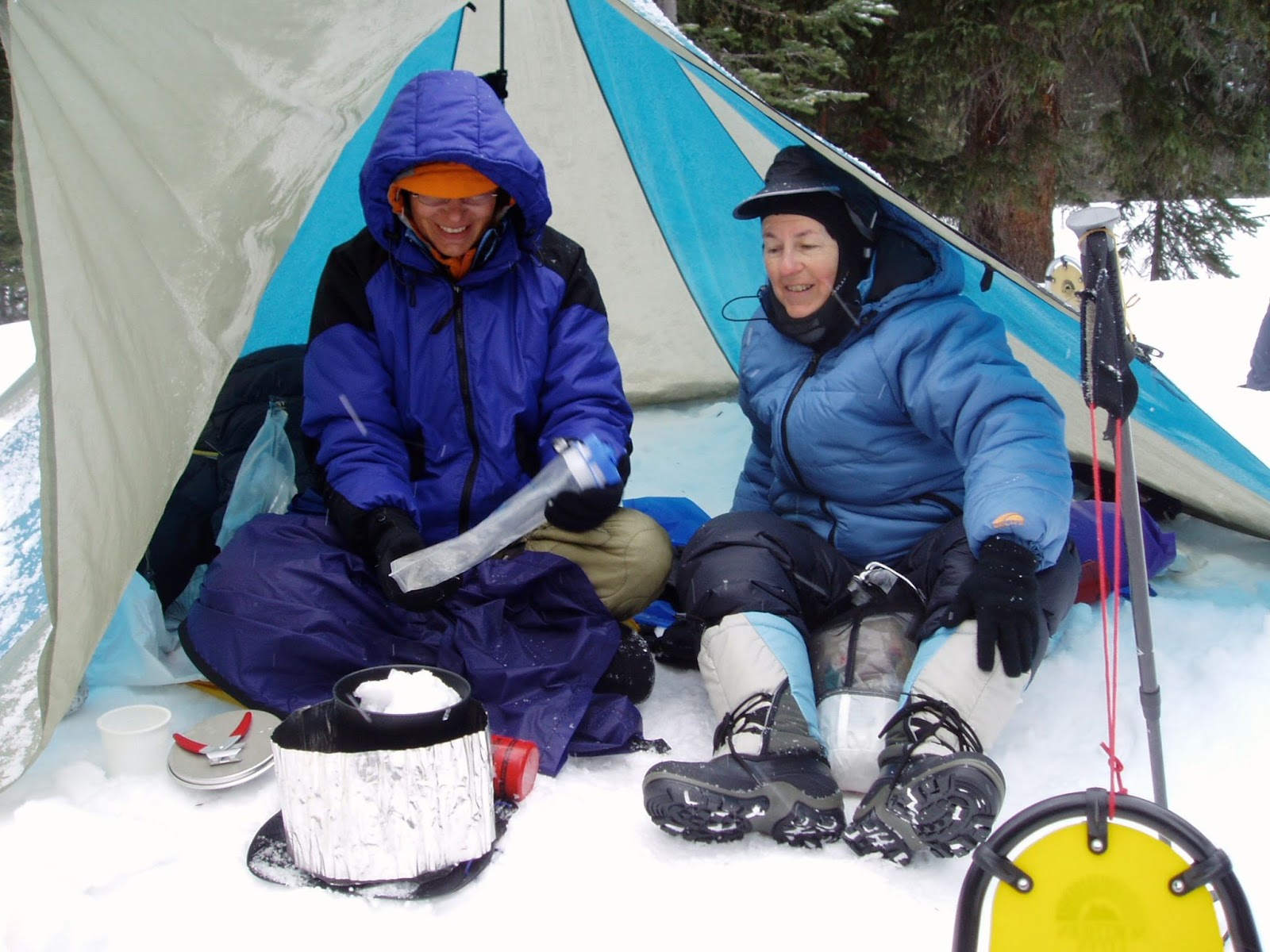Episode 75 | Winter Layering for the Legs
Episode Summary
Much attention is paid to layering for the torso, head, hands, and feet - but the legs are often ignored. However, during winter conditions, an intentional layering strategy for the legs can make the difference between comfort and misery. For mild winter conditions, a layering strategy may look similar to a 3-season lower body layering system. However, when temperatures drop below freezing, and snow and wind increase, the strategy needs to change a bit. Listen to this episode to explore some of these strategies so you can stay warm and comfortable when the mercury drops.
Listen
Summary
Much attention is paid to layering for the torso, head, hands, and feet – but the legs are often ignored. However, during winter conditions, an intentional layering strategy for the legs can make the difference between comfort and misery. For mild winter conditions, a layering strategy may look similar to a 3-season lower body layering system. However, when temperatures drop below freezing, and snow and wind increase, the strategy needs to change a bit. Listen to this episode to explore some of these strategies so you can stay warm and comfortable when the mercury drops.

In this Episode:
- The classic 3-season layering system
- Why this system fails in the winter
- The challenges we face: cold, wind, and snow
- Layering strategies on the trail
- Layering strategies in camp
- Layering strategies while sleeping
- This podcast is advertising free
Links, Mentions, Recommendations
- Event: BPL Trail Days Online 2023!
- Webinar: Winter Hiking & Backpacking Gear Part 1 | Part 2
- Ryan’s Winter Layering System #1 (mild conditions)
- Merino Wool Base Layer Bottoms (same as summer)
- Woven Nylon Trekking Pants (same as summer)
- Patagonia DAS Light Pants (insulated side-zip pants)
- No rain pant
- Ryan’s Winter Layering System #2 (stormy conditions)
- Polartec Alpha Direct Pants (MYOG)
- Waterproof-Breathable Rain Pant (with side zips for ventilation)
- Patagonia DAS Light Pants (insulated side-zip pants)
- Ryan’s Winter Layering System #3 (extreme cold)
- Brynje Super Thermo Mesh 3/4 Bottoms
- Polartec Alpha Direct Pants (MYOG)
- Waterproof-Breathable Rain Pant (with side zips for ventilation)
- Feathered Friends Volant Pants (down-insulated side-zip pants)

How to Subscribe
- Apple Podcasts | Spotify | RSS
More Episodes
Credits
- Executive Producer - Backpacking Light; Show Director and Host - Ryan Jordan; Producer - Chase Jordan; Theme music: Look for Me in the Mountains written by Chris Cunningham and Ryan Jordan, performed by Chris Cunningham (acoustic guitar, lead and harmony vocals, harmonica), Chad Langford (upright bass), and Tom Murphy (mandolin), produced by Basecamp Studios in Bozeman, Montana.
Feedback / Tips / Questions
More Backpacking Light
- Sign up for the Newsletter.
- Become a Backpacking Light Member.
- Follow us elsewhere on the web: YouTube | Instagram | Facebook
Disclosure
- Sponsorship Policy: Backpacking Light does not accept compensation or donated/discounted products in exchange for product mentions or placements in editorial coverage, including any podcast episode content not excplicitly identified as sponsored content.
- Some (but not all) of the links in these show notes may be affiliate links. If you click on one of these links and visit one of our affiliate partners (usually a retailer site), and subsequently place an order with that retailer, we receive a commission on your entire order, which varies between 3% and 15% of the purchase price. Affiliate commissions represent less than 15% of Backpacking Light's gross revenue. More than 70% of our revenue comes from Membership Fees. So if you'd really like to support our work, don't buy gear you don't need - support our consumer advocacy work and become a Member instead.
- Learn more about affiliate commissions, influencer marketing, and our consumer advocacy work by reading our article Stop wasting money on gear.




Home › Forums › Episode 75 | Winter Layering for the Legs